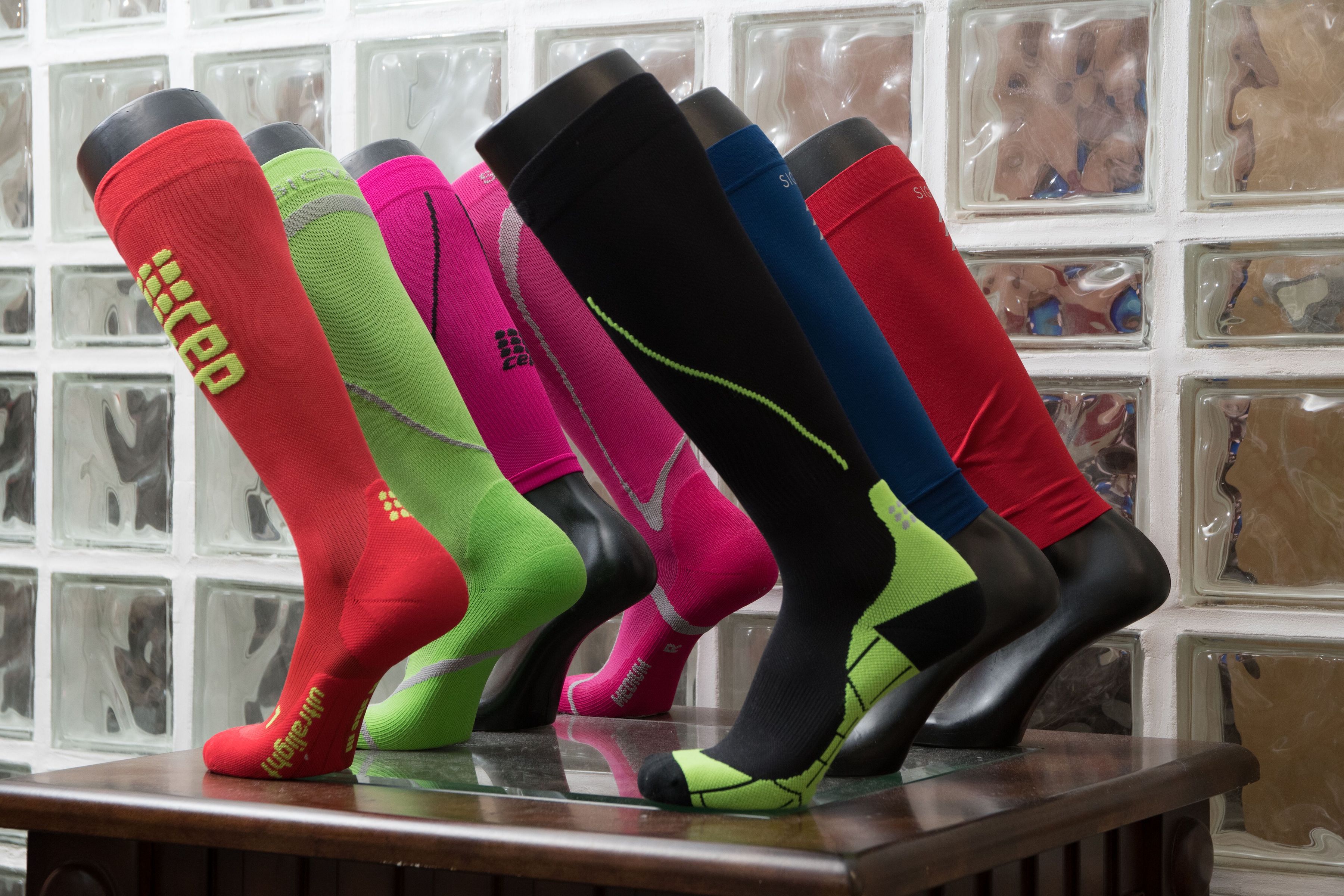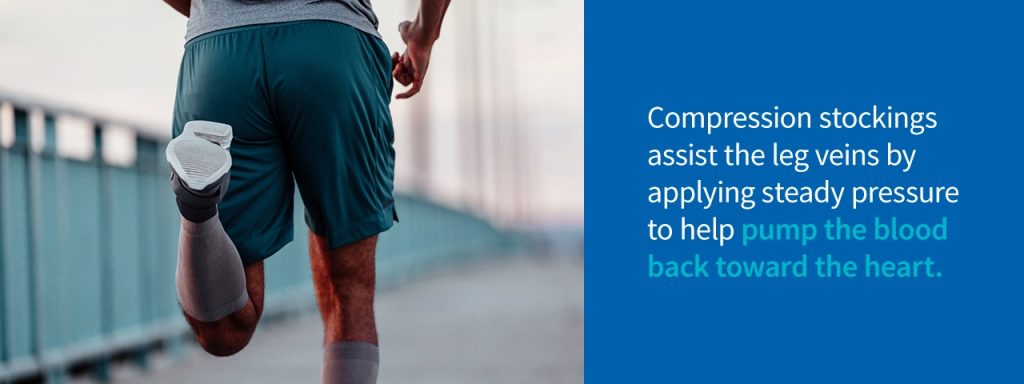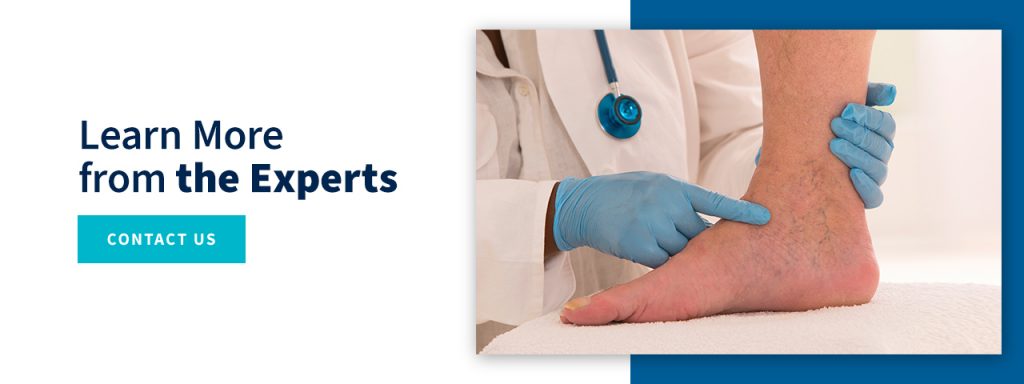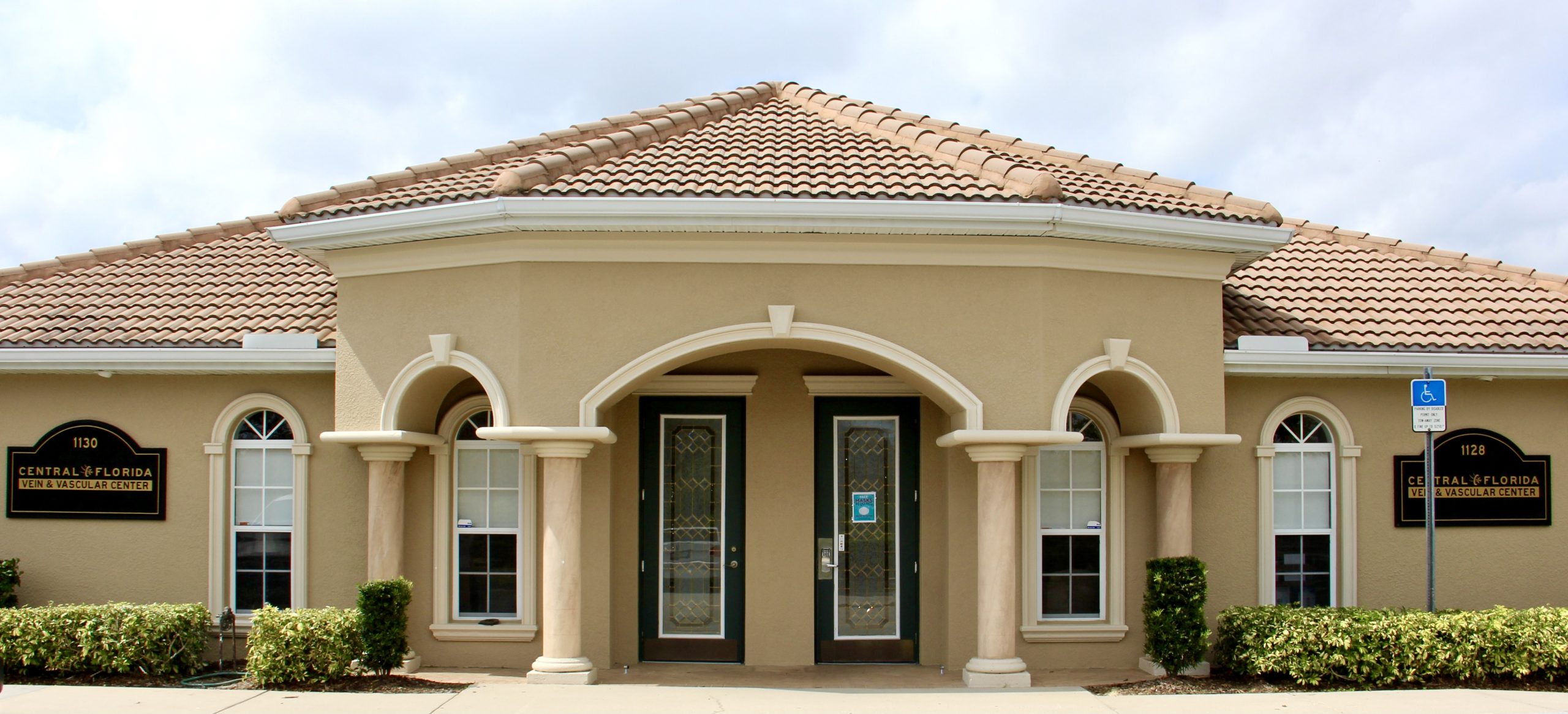Sometimes, surgical invention isn’t the first step in handling varicose veins. When you visit the best vascular surgeons in Orlando at Central Florida Vein & Vascular Center for a consultation, they may decide compression socks could help manage your vein health.
You may think seeing a specialist for compression socks may be unnecessary since this useful legwear can be bought in stores. However, there are plenty of reasons why you should see a specialist before purchasing compression stocks. Let’s look deeper into how compression socks work and why it’s so important to ask a specialist about them.
(Learn the Basics of Varicose Veins)
How Do Compression Socks Help Circulation?
First, picture your veins. Your veins have valves that help promote healthy circulation throughout the body. The vein valves in your legs have an extra challenge: they must circulate blood upward against gravity flow. These valves can become damaged or weakened over time. This causes blood to pool in the lower leg and form a varicose vein. These veins appear dark and bulging under the skin, making the legs feel heavy, itchy, tired or painful. If left untreated, this can increase your risk of developing other conditions, such as a blood clot or a venous ulcer.
Compression socks can be used to boost the vein valves to promote healthy blood flow. This legwear applies gradual amounts of pressure to the leg, with the greatest amount of pressure at the bottom. This pressure helps to guide blood back up the leg. They can be very useful in treating varicose veins symptomatically so that you feel less pain or heaviness in the legs. However, it’s important to remember that compression socks are not a cure for varicose veins.
 When Should I Wear Compression Stockings?
When Should I Wear Compression Stockings?
Not everyone needs to wear compression stockings all day, every day. If you’re only picking up a pair of compression stockings to manage leg swelling after a long day at work, you probably don’t have to consider them part of your daily wardrobe. They can also be useful for occasional wear to ease leg swelling from traveling or sports. If you already have varicose veins, you’ll want to wear them daily — your legs need all the help they can get to keep your blood circulating as it should.
How Long Should I Wear Compression Socks?
Generally, compression socks are designed to be worn all day, every day — especially for long periods. Whether you are traveling the world or sitting at your desk job all day, they are safe to wear.
While it is common for people to put on their compression socks in the morning and take them off before bed, consider the symptoms you have experienced to determine your exact schedule. If you experience discomfort and fatigue following exercise, you can wear compression socks for three to four hours immediately after. If you have leg swelling, put compression socks on before a long period of standing. Wearing the socks in both of these situations helps encourage circulation to reduce mild symptoms.
In short, wearing compression socks to prevent poor circulation and reduce swelling is effective in a lounge chair or while running on a sports field. Be sure to consult your doctor for the best compression sock practices.
Can I Sleep in Compression Socks?
Even if you wear your compression socks all day, take them off before heading to bed. Compression socks are tight and should be worn without bunches or folds. However, when you sleep, you will likely not notice if this happens. Your sock could cut off your leg circulation, resulting in serious complications.
Also, while lying horizontally in your bed, your leg veins don’t need extra assistance pumping blood against the gravitational pull. For this reason, compression socks are much more beneficial during the day, especially when standing upright.
While compression socks should not be uncomfortably tight, it’s good to give your legs a break. Wearing compression socks for 24 hours, seven days a week can be hard on your skin. Before you go to bed, take the time to peel them off, apply lotion and let your skin breathe.
However, it is not harmful to leave them on if you’re lying down for a quick power nap. We understand that sometimes evening naps take you by surprise and you don’t have the time to wiggle out of your compression socks before you doze. Just be sure it will only be for a short period.
Who Should Not Wear Compression Socks?
Certain conditions can be made worse by compression socks. You should not be wearing compression socks if you have:
- Diabetes
- A wound in the lower leg
- A condition, such as Peripheral Neuropathy, that decreases your ability to feel anything on your skin
- Peripheral artery disease
- Too much swelling in the leg
- Congestive heart failure
If you fit any of these criteria, it’s best to avoid compression socks and pursue a different line of treatment. A specialist can work with you and figure out what treatment will be safest for your veins and overall health. Luckily, many different treatment options are available to treat varicose veins.
Why Wear Compression Stockings for Varicose Veins?
Varicose veins are formed when vein valves are weak or damaged. These weakened or damaged valves affect your vein’s ability to push blood upward against gravity resulting in blood pooling into the vein instead. Legs can feel heavy, restless and painful as the veins swell. Compression stockings offer symptomatic relief by giving your legs a little help with proper blood circulation.
Compression stockings strategically apply pressure to the leg. They’re tightest in the ankle and gradually decrease pressure toward the top of the stocking. This pushes blood to flow upward, helps maintain proper circulation and minimizes the swelling associated with varicose veins. They also provide other benefits, including:
- Preventing or managing spider veins
- Steadying blood pressure
- Promoting healing after seeking vein therapy from a specialist
Picking the Right Compression Stocking for You
Stockings come in various sizes and compression levels, so you’ll want to know what size you need before you start shopping. Manufacturers will include their measurement guides, but you’ll be expected to know the size of your ankles and the widest point of your calf. If you’re picking up thigh-high stockings or compression tights, you’ll also need to know measurements for your thighs and inseam.
Next, you’ll need to pick out the best compression level for you. These are measured by blood pressure in millimeters of mercury (mmHg). Not all compression stockings are available over the counter, so you may still need to visit a specialist to get the best fit for you. Stockings are available in four different compression levels:
- 15-20 mmHg. The lowest level is ideal if you’re experiencing leg swelling and fatigue due to being on your feet for extended periods. These are available over the counter.
- 20-30 mmHg. A Medical Class Grade I stocking, this level works for most individuals and is most often prescribed for varicose veins. It can also help manage leg swelling and heaviness due to pregnancy.
- 30-40 mmHg. This Medical Class Grade II stocking is generally used for patients with deep vein thrombosis.
- 40-50 mmHg. This Medical Class Grade III stocking is the strongest available and should only be used when prescribed by a physician. This level is used to manage severe lymphedema, wounds and ulcers.
How to Wear Compression Stockings
The gradual pressure offered by compression stockings benefits your legs once they’re on. However, it can make it quite tricky to get your leg into the stocking! Don’t worry — if done properly, it’s not as hard as it may seem.
- Donning gloves or regular kitchen gloves to prevent your hands from causing any damage to your stockings.
- Fold your stocking inside-out to the heel.
- Place your foot inside.
- Carefully pull the stocking up over your leg.
- Make sure it does not wrinkle.
Seeing a Specialist About Compression Socks
Finding the right size and level of compression that’s right for you can be tricky. You can’t tell by sight alone what will work. This is where a specialist can help. A specialist will go beyond just sizing your legs — they will use an ultrasound to create a clear picture of your vein health. From there, they’ll be able to tell you what type of compression will be best. Or, they may decide that compression socks aren’t the best course of action. If necessary, they may talk to you about surgical intervention. There’s no need to worry about vein surgery. Treatments are minimally invasive with little downtime, and they address the root of the problem instead of simply managing symptoms. and
Again, we stress that compression socks are not a cure for varicose veins. Even if you buy a pair of light compression socks from a nearby store, they will not fix the underlying issue.
When Compression Socks Aren’t Enough
As we’ve stated before, compression socks may not be viable for some people. Or, in some cases, they aren’t a long-term solution for vein health. In these cases, your specialist will likely recommend surgical intervention. The type of surgery will vary based on your vein health, but modern treatment options are minimally invasive. It often consists of either applying heat energy or injecting a special solution into the vein to irritate and close it, effectively removing the vein without scarring. Treatment is done as an outpatient procedure — when patients can go home the same day — and often return to work the following day.
 Learn More from Board-Certified Specialists
Learn More from Board-Certified Specialists
Have questions about compression socks or your overall vein health? You know what to do. Our team of the best vascular surgeons in Orlando at Central Florida Vein & Vascular Center have dedicated themselves to providing the best care possible. Our board-certified specialists are highly trained in modern, minimally-invasive treatments. They’re available to answer your questions, assess your vein health and create the treatment plan that will be most beneficial for your veins.
You can call us today at 407-545-3385 or 352-658-5547 to schedule a consultation. You’ll be able to meet us in one of three convenient locations in The Villages, Kissimmee or Ocoee — whichever works best for you.


 When Should I Wear Compression Stockings?
When Should I Wear Compression Stockings?


